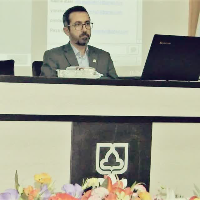Critique of Rezaei's translation of Sahifa based on the theory of Vienna and Darblin
The position of Sahifa Sajjadieh translates it. So that sixty translations and descriptions of Persian language have been provided. Mohammad Mehdi Rezaei is one of the translators of Sahifa Sajjadieh. Their translation is one of the newest translations of Sahifa Sajjadieh on which research has been done. In the present study, using a descriptive analytical method and in order to provide a fair critique, the translation of Sahifa Sajjadieh by Mohammad Mehdi Rezaei based on the theory of Vienna and Darblin has been reviewed. This theory, which has seven strategies for recognizing and examining a translation at the level of equivalence, is a useful theory and by translating different principles and components in the two main approaches, namely direct and indirect approach, it deals with the translator translation method. The findings of this study showed that Rezaei may have borrowed, borrowed, borrowed, perhaps because he wanted to provide both literary translations with specific words and interpretations of Persian culture, and because in this translation he sought to approximate cultural equations. Has used less combination and displacement of words, in contrast, has used the component of equivalence and adaptation more. In general, the melodicity of sentences and the use of Persian equations and sentences appropriate to Iranian culture is an important feature of Rezaee's translation of Sahifa Sajjadieh.
-
A critical discourse analysis study of Barid Al-Lail (explanation and interpretation levels)
*, Reyhane Emami Chahartagh
Studies in Arabic Narratology journal, -
The semantics of the word “dispute” based on the seven types of Izutsu's simultaneous semantic theory
Sakineh Mosavi Asl, Shaker Ameri *, Ali Akbar Noresideh
Journal Of Linguistic and Rhetorical Studies,


